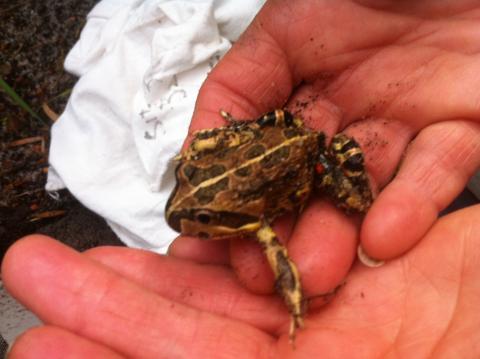
A few weeks ago, I was asked why we sanitise locality details on specimens. I explained why. And just last week, I was asked again, so I explained. And just earlier today, I was asked what sanitising locality details meant.
I sensed a pattern.
Although it seems obvious and important to me, it may not be clear to everyone. In fact, most people probably don't know what sanitising locality data means.
So I thought this could be a good place to introduce the concept to those who may not have much to do with biodiversity data.
The WA Museum mobilises much of its specimen data to the Atlas of Living Australia, with more coming. One of the key concerns of collection managers is the sensitivity of data that becomes available to the public.
Of the data fields considered sensitive, perhaps the locality information causes the most concern.
Let’s look at the example of a Silver Gull. If you were to give out the exact observation location of this animal, you probably wouldn’t be too worried about poachers or private collectors. Well, I wouldn’t be.
But what about a newly described goanna species? This animal would be highly prized by private collectors and revealing the exact location of where we found it could encourage poachers.
So in this case, it would make sense to sanitise, or blur, the location information of the goanna to make this information less precise. In the case of the Silver Gull, precise location data down to the metre is safe to publicise.
This is just one simple example of why it can be important to sanitise location information on certain animals. But what about the other side of the coin?
If an animal is threatened, precise location data is vital to protect that animal. Without understanding where it lives (or lived) how can we understand where we need to protect or track habitat loss? So legitimate users of this locality data need that precise information, even if it is hidden from the public.
Essentially this is what the Sensitive Data Services (SDS) from the Atlas of Living Australia offers. Specific specimen records are made less precise so it is not possible to determine where the animal was found, for certain animals. The record will be sanitised to a varying degree, depending on the rules of the Australian state where it was recorded.
So that is a (highly) simplified description of the process behind sanitising the location information of specimen records.
That’s not to say the debate on sanitisation is settled.
I’ve simplified my description to the point that it removes many of the pointier parts of the debate. For example, publishers may have uncertainty about a particular record. Or they may wish for only 100% verifiable localities to be public. Or they may believe it gives other researchers the chance to publish based on their own hard work. Or any number of other reasons that I won’t go into… for now…
I have many discussions with people who present compelling arguments for either more or less sanitised location information that explore all kinds of unusual use cases.
I do like the balance that SDS offers on the Atlas of Living Australia. The information is still biologically significant, but protected. And you can always contact the museum to get the unsanitised data for detailed research.
In this blog, I’ve given a simple overview of the process of sanitising locality data. Nothing more. If you’d like a detailed discussion about the process, or arguments for either side, or more information about other sensitive data fields, drop me a tweet or comment and I’ll get right onto it.